Search Result
Results for "
ROS level
" in MedChemExpress (MCE) Product Catalog:
1
Isotope-Labeled Compounds
| Cat. No. |
Product Name |
Target |
Research Areas |
Chemical Structure |
-
- HY-149265
-
|
|
Reactive Oxygen Species
TrxR
Ferroptosis
Apoptosis
|
Cancer
|
|
ROS-generating agent 1 (Compound 2c) covalently modifies the Sec-498 residue of TrxR to generate ROS. ROS-generating agent 1 reduces intracellular TrxR protein level. ROS-generating agent 1 results in ROS-dependent apoptosis and ferroptosis of NCI-H460 cells. ROS-generating agent 1 has anti-cancer activities .
|
-
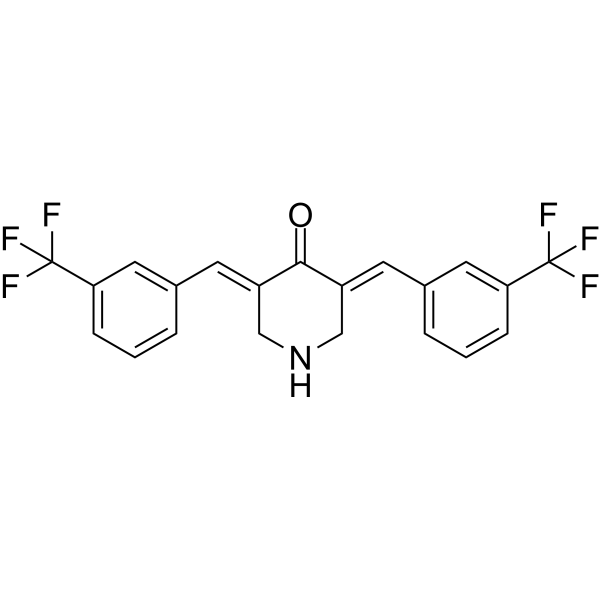
-
- HY-23119
-
-

-
- HY-162319
-
|
|
Apoptosis
HDAC
Microtubule/Tubulin
Reactive Oxygen Species
|
Cancer
|
|
Tubulin/HDAC-IN-4 (compound 9n) is a dual Tubulin and HDAC inhibitor with IC50 values of 0.73, 0.43, 0.62, 2.34 µM for HDAC1, HDAC2, HDAC6, HDAC7, respectively. Tubulin/HDAC-IN-4 inhibits the tubulin polymerization by targeting the colchicine binding site. Tubulin/HDAC-IN-4 induces apoptosis and cell cycle arrest at G2/M phase. Tubulin/HDAC-IN-4 induces a significant elevation of intracellular ROS levels. Tubulin/HDAC-IN-4 shows anti-angiogenesis activity and anticancer activity .
|
-
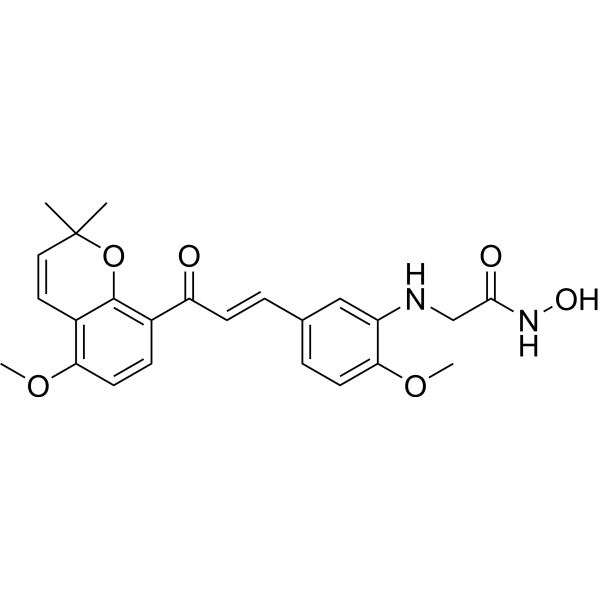
-
- HY-120553
-
|
|
Apoptosis
|
Neurological Disease
|
|
B355252, a phenoxy thiophene sulfonamide small molecule, is a potent NGF receptor agonist. B355252 potentiates NGF-induced neurite outgrowth. B355252 protects ischemic neurons from neuronal loss by attenuating DNA damage, reducing ROS production and the LDH level, and preventing neuronal apoptosis. B355252 has anti-apoptotic effects in glutamate-induced excitotoxicity, as well as in a murine hippocampal cell line (HT22) model of Parkinson disease (PD) .
|
-

-
- HY-139860
-
|
|
Reactive Oxygen Species
|
Cancer
|
|
Anticancer agent 15 is capable of significantly increasing the cellular level of ROS and inducing melanoma cancer cell death via necroptosis.
|
-
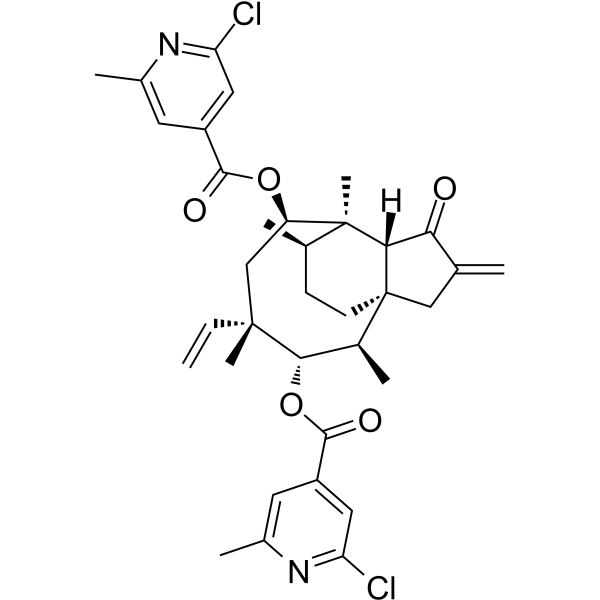
-
- HY-D1713
-
|
|
Reactive Oxygen Species
|
Others
|
|
CM-H2DCFDA is a derivative of H2DCFDA (HY-D0940). CM-H2DCFDA can be used to determine cellular oxidant levels (Ex/Em: 495/530 nm). CM-H2DCFDA is light-sensitive .
|
-

-
- HY-N1967
-
|
|
|
|
|
Dihydrocurcumin, a major metabolites of curcumin, reduces lipid accumulation and oxidative stress. Dihydrocurcumin regulates mRNA and protein expression levels of SREBP-1C, PNPLA3 and PPARα, increases protein expression levels of pAKT and PI3K, and reduced the levels of cellular NO and ROS via Nrf2 signaling pathways .
|
-

-
- HY-155750
-
-
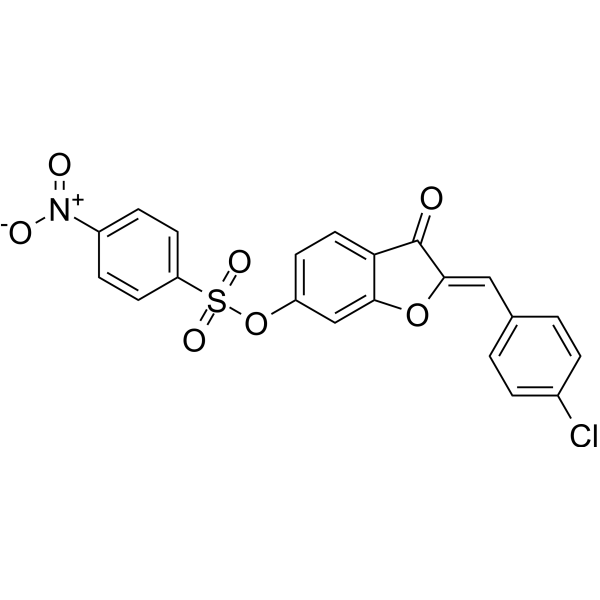
-
- HY-155749
-
-
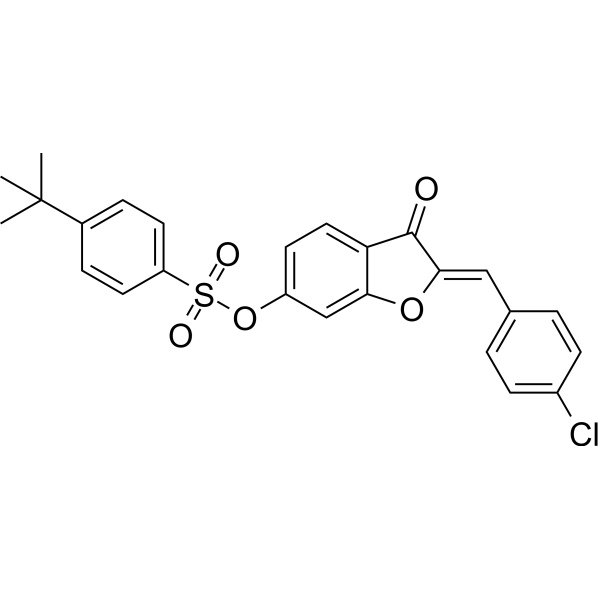
-
- HY-W654078
-
|
BPAF-13C12; 4,4'-(Perfluoropropane-2,2-diyl)diphenol-13C12
|
Isotope-Labeled Compounds
|
Others
|
|
Bisphenol AF- 13C12 is an isotopic label of Bisphenol AF. Bisphenol AF is used in polycarbonate plastic and epoxy resin manufacturing. Bisphenol AF can significantly increase intracellular ROS levels .
|
-
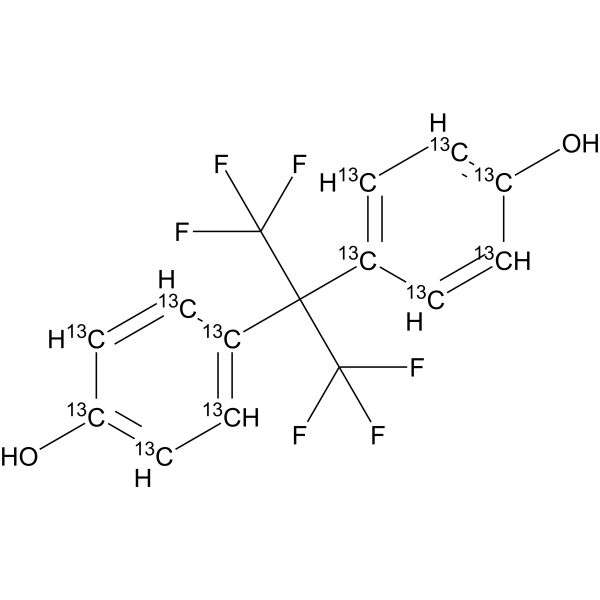
-
- HY-155409
-
|
|
Lipoxygenase
|
Inflammation/Immunology
|
|
ALR-38 is a 5-lipoxygenase (5-LOX) inhibitor (IC50: 1.1 μM) with anti-inflammatory activity. ALR-38 effectively reduces ROS levels in neutrophils .
|
-
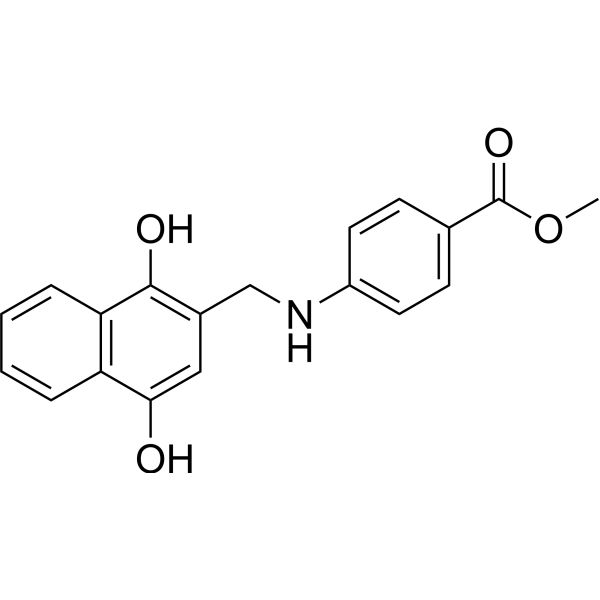
-
- HY-126474
-
|
|
Reactive Oxygen Species
|
Inflammation/Immunology
|
|
MitoB bromide is an exomarker of mitochondrial hydrogen peroxide. MitoB bromide is a mitochondria-targeted ratiometric probe, and can be used to measure levels of one major ROS, hydrogen peroxide, within living animals .
|
-
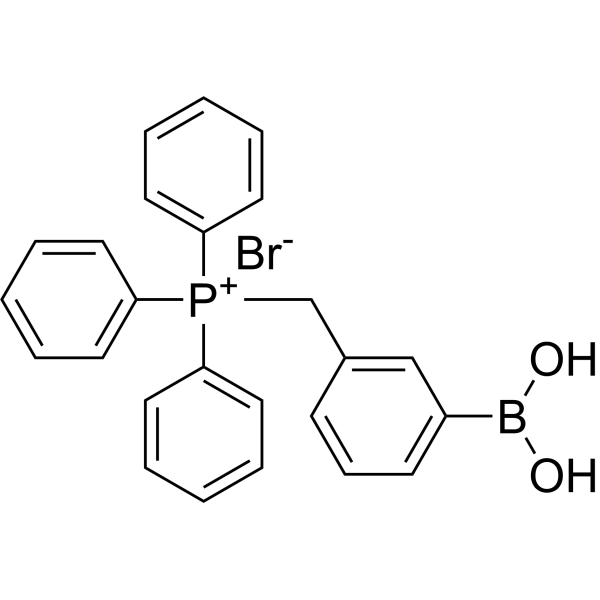
-
- HY-155023
-
|
|
Apoptosis
Reactive Oxygen Species
|
Cancer
|
|
Apoptosis inducer 13 (Compound Ru4) can induce cancer cell apoptosis, and inhibits cancer cell migration and invasion. Apoptosis inducer 13 converts coenzyme NADH to NAD +, and increases intracellular ROS levels .
|
-
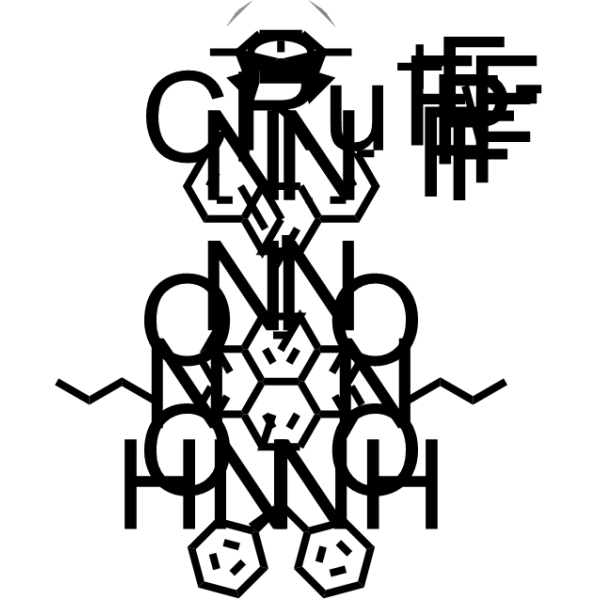
-
- HY-P5553
-
|
|
Bacterial
|
Infection
|
|
cPcAMP1/26 is an antimicrobial peptide. cPcAMP1/26 effectively kills A.hydrophila and S. aureus. cPcAMP1/26 induces depolarization of the bacterial plasma membrane, and increases intracellular ROS levels .
|
-

-
- HY-100581
-
|
|
|
|
|
CORM-3, a carbon monoxide-releasing molecule, attenuates NF-κB p65 nuclear translocation, reduces ROS generation and enhances intracellular glutathione and superoxide dismutase levels. CORM-3 reduces NLRP3 inflammasome activation .
|
-
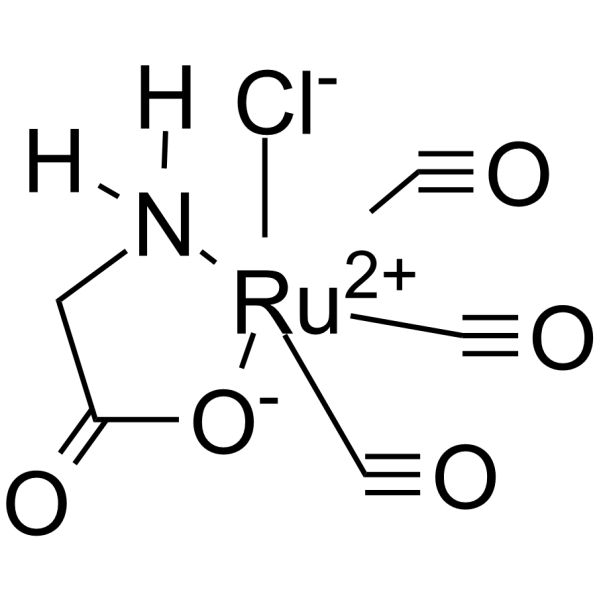
-
- HY-136395
-
|
|
Reactive Oxygen Species
|
Infection
|
|
Cartap, an organonitrogen insecticide, can cause a marked irreversible Ca 2+-dependent contracture in both isolated mouse and rabbit phrenic nerve-diaphragms. Cartap significantly increases the level of endogenous reactive oxygen species (ROS) in C2C12 cells .
|
-
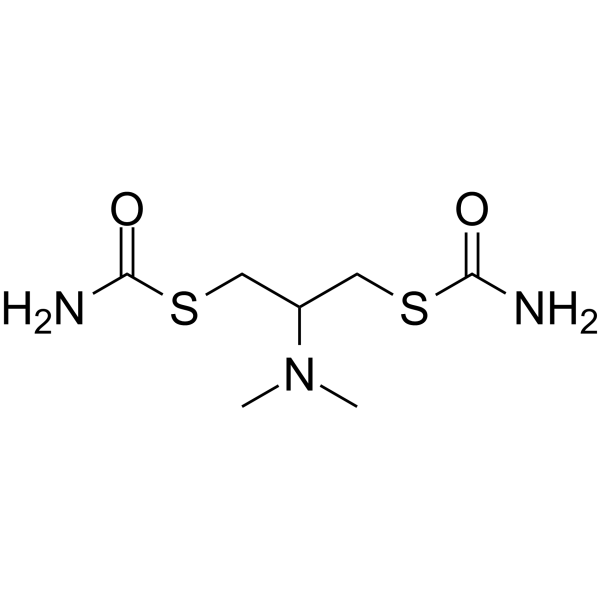
-
- HY-W040028
-
|
|
Reactive Oxygen Species
|
Infection
|
|
Cartap hydrochloride, an organonitrogen insecticide, can cause a marked irreversible Ca 2+-dependent contracture in both isolated mouse and rabbit phrenic nerve-diaphragms. Cartap hydrochloride significantly increases the level of endogenous reactive oxygen species (ROS) in C2C12 cells .
|
-
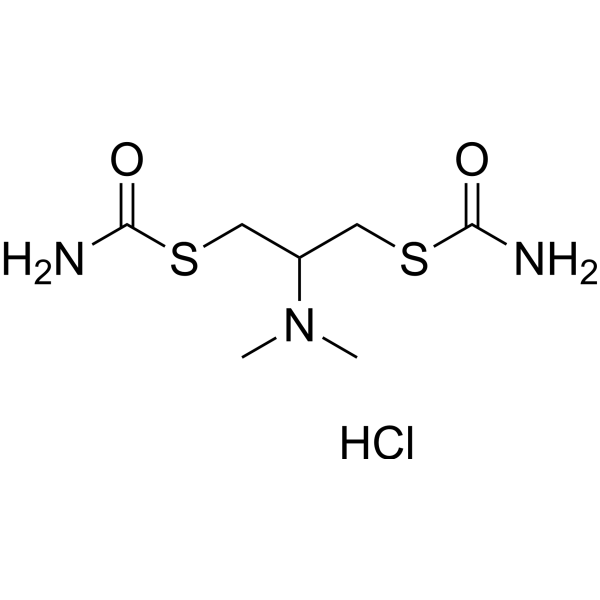
-
- HY-126940
-
|
|
Reactive Oxygen Species
P-glycoprotein
Apoptosis
|
Cancer
|
|
Furanodiene is a natural terpenoid isolated from Rhizoma Curcumae. Furanodiene plays anti-cancer effects through anti-angiogenesis and inducing ROS production, DNA strand breaks and apoptosis. Furanodiene suppresseed efflux transporter Pgp (P-glycoprotein) function and reduced Pgp protein level .
|
-

-
- HY-147803
-
|
|
Reactive Oxygen Species
|
Cancer
|
|
TrxR-IN-5 (compound 4f) is a potent TrxR (thioredoxin reductase) inhibitor, with an IC50 of 0.16 μM. TrxR-IN-5 increases the levels of ROS, thus leading to potent antiproliferative effects. TrxR-IN-5 exhibits prominent anticacer and anti-metastasis effects .
|
-
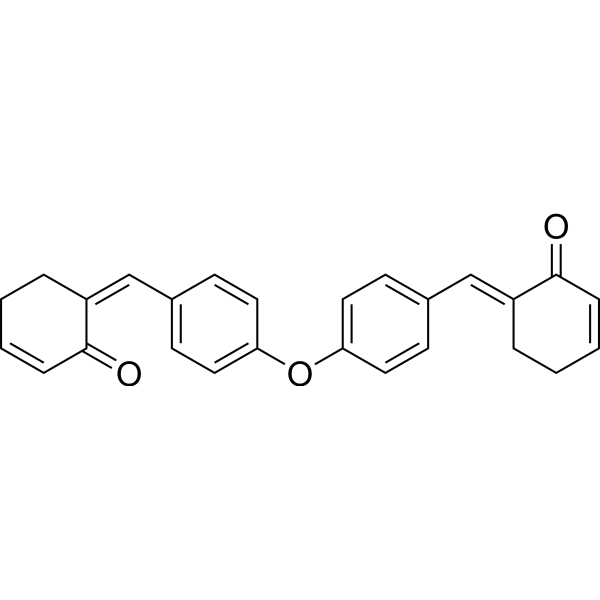
-
- HY-146170
-
|
|
Reactive Oxygen Species
EGFR
Apoptosis
|
Cancer
|
|
Anticancer agent 69 (Compound 34), a potent and selective anticancer agent , potently and selectively inhibits human prostate cancer cell line PC3 (IC50=26 nM). Anticancer agent 69 increases ROS level, down-regulates EGFR and induces apoptosis .
|
-
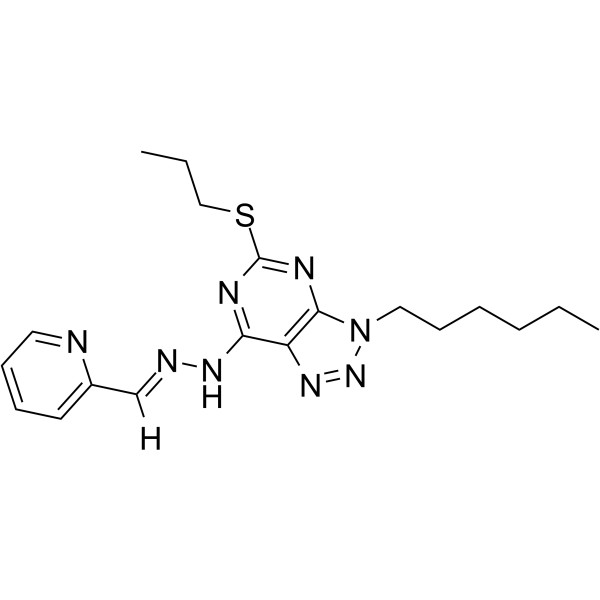
-
- HY-153873
-
|
|
Keap1-Nrf2
Reactive Oxygen Species
|
Cancer
|
|
MSU38225 is an Nrf-2 inhibitor that increases levels of reactive oxygen species (ROS). MSU38225 inhibits the growth of human lung cancer cells and enhances the sensitivity of human lung cancer cells to chemotherapy in vitro and in vivo. MSU38225 can be used in cancer research .
|
-
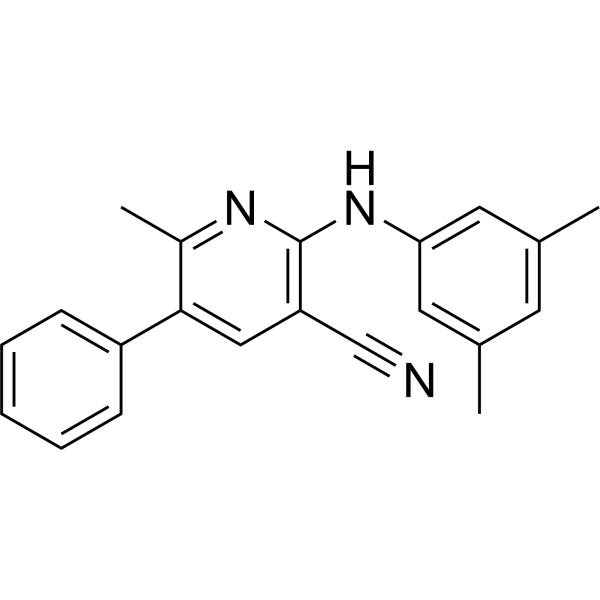
-
- HY-15586
-
L67
1 Publications Verification
DNA Ligase Inhibitor
|
DNA/RNA Synthesis
Caspase
Apoptosis
Reactive Oxygen Species
|
Cancer
|
|
L67 (DNA Ligase Inhibitor) is a competitive DNA ligase inhibitor that effectively inhibits DNA ligases I/III (both IC50 are 10 μM). L67 (DNA Ligase Inhibitor) can cause nuclear DNA damage by reducing levels of mitochondrial DNA and increasing levels of mitochondrially-generated ROS. L67 (DNA Ligase Inhibitor) also activates the Caspase 1-dependent apoptosis pathway in cancer cells, can be used in cancer research .
|
-
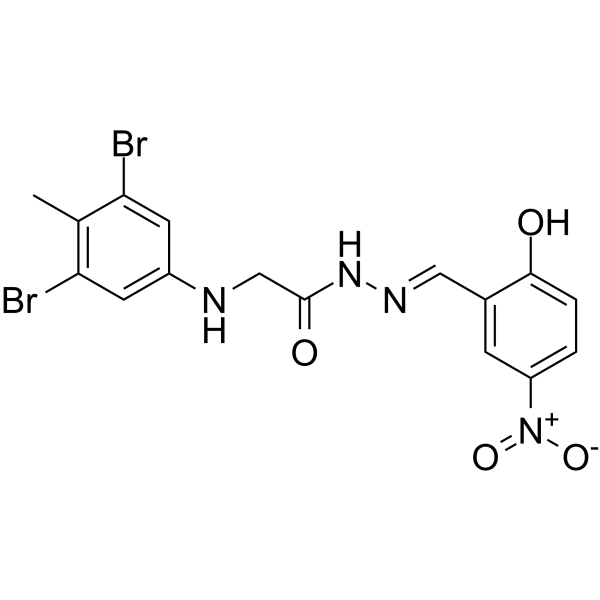
-
- HY-16214
-
|
LDHA Inhibitor FX11
|
Lactate Dehydrogenase
Apoptosis
Reactive Oxygen Species
|
Cancer
|
|
FX-11 is a potent, selective, reversible and competitive lactate dehydrogenase A (LDHA) inhibitor, with a Ki of 8 μM. FX-11 reduces ATP levels and induces oxidative stress, ROS production and cell death. FX-11 shows antitumor activity in lymphoma and pancreatic cancer xenografts .
|
-

-
- HY-N2852
-
|
|
Others
|
Others
|
|
α-Terthienylmethanol is a terthiophene isolated from the n-hexane fraction of E. prostrata. α-Terthienylmethanol has potent cytotoxic activity against human endometrial cancer cells (Hec1A and Ishikawa) (IC50 < 1 μM). α-Terthienylmethanol increases the intracellular level of ROS and decreases that of GSH .
|
-
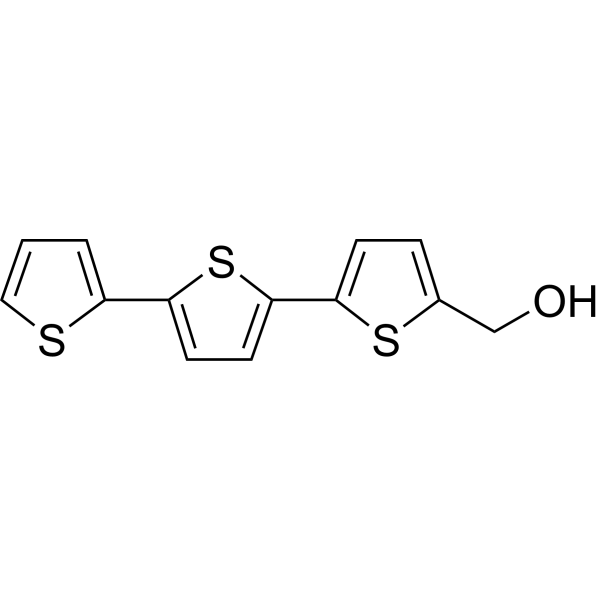
-
- HY-N0502
-
|
|
Reactive Oxygen Species
|
Metabolic Disease
Cancer
|
|
Mogroside V is a the major active constituent of a traditional Chinese medicine Siraitiae Fructus. Mogroside V reduces the intracellular reactive oxygen species (ROS) levels and enhances mitochondrial function. Mogroside V has anti-oxidative, anti-diabetic and anti-carcinogenic effects. Mogroside V can be used for diabetic diseases research .
|
-
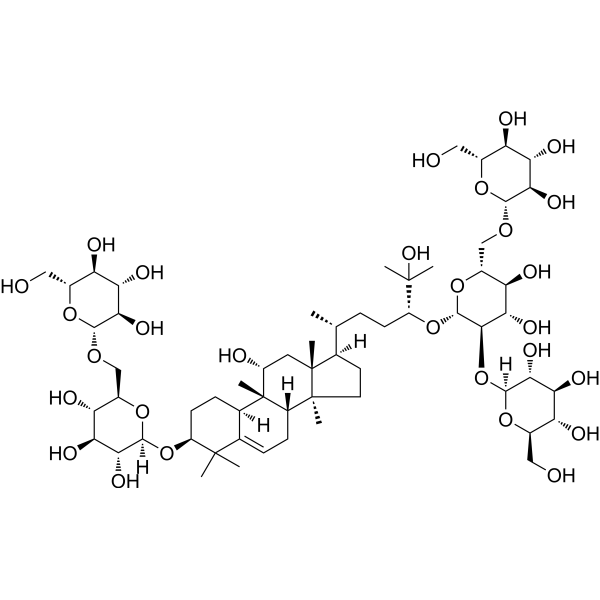
-
- HY-B0150
-
|
Niacinamide; Nicotinic acid amide
|
Organoid
Endogenous Metabolite
Sirtuin
HBV
|
Cancer
|
|
Nicotinamide is a form of vitamin B3 or niacin. Nicotinamide Hydrochloride inhibits SIRT2 activity (IC50: 2 μM). Nicotinamide also inhibits SIRT1. Nicotinamide increases cellular NAD+, ATP, ROS levels. Nicotinamide inhibits tumor growth and improves survival. Nicotinamide also has anti-HBV activity .
|
-

-
- HY-128784
-
|
|
MDM-2/p53
Reactive Oxygen Species
|
Cancer
|
|
PK11007 is a mild thiol alkylator with anticancer activity. PK11007 stabilizes p53 via selective alkylation of two surface-exposed cysteines without compromising its DNA binding activity. PK11007 induces mutant p53 cancer cell death by increasing reactive oxygen species (ROS) levels .
|
-
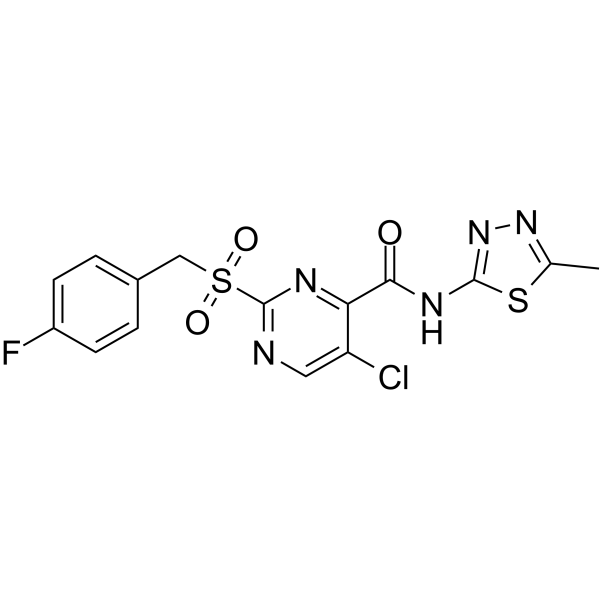
-
- HY-146971
-
|
|
NO Synthase
Reactive Oxygen Species
|
Inflammation/Immunology
|
|
Anti-inflammatory agent 38 (compound 23d) is a potent Nrf2/HO-1 pathway inhibitor, with an IC50 value of 0.38 μM for NO. Anti-inflammatory agent 38 can significantly reduce the level of ROS in cells. Anti-inflammatory agent 38 can be used for researching anti-inflammatory .
|
-
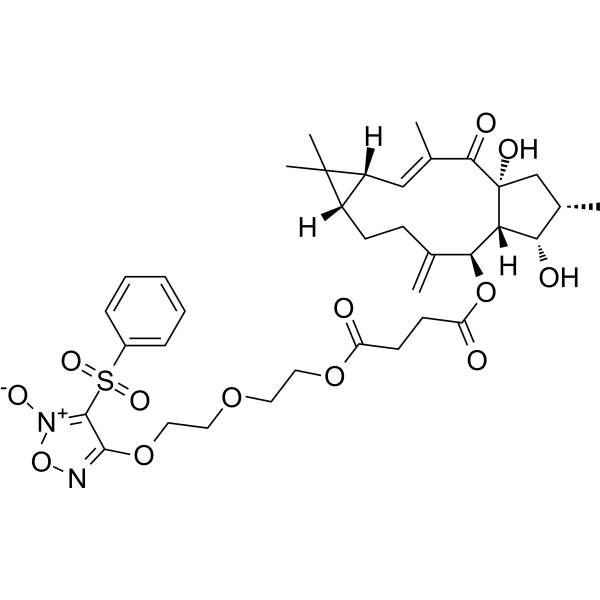
-
- HY-B0150A
-
|
Niacinamide Hydrochloride; Nicotinic acid amide Hydrochloride
|
|
|
|
Nicotinamide Hydrochloride is a form of vitamin B3 or niacin. Nicotinamide Hydrochloride inhibits SIRT2 activity (IC50: 2 μM). Nicotinamide Hydrochloride also inhibits SIRT1. Nicotinamide Hydrochloride increases cellular NAD+, ATP, ROS levels. Nicotinamide Hydrochloride inhibits tumor growth and improves survival. Nicotinamide Hydrochloride also has anti-HBV activity .
|
-
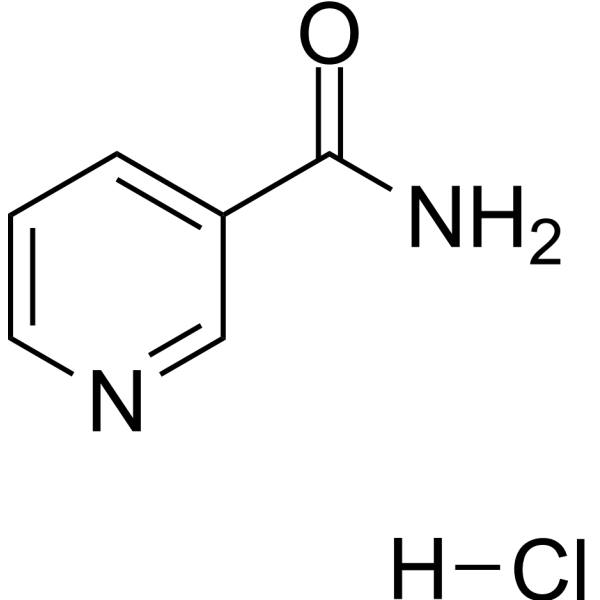
-
- HY-161268
-
-
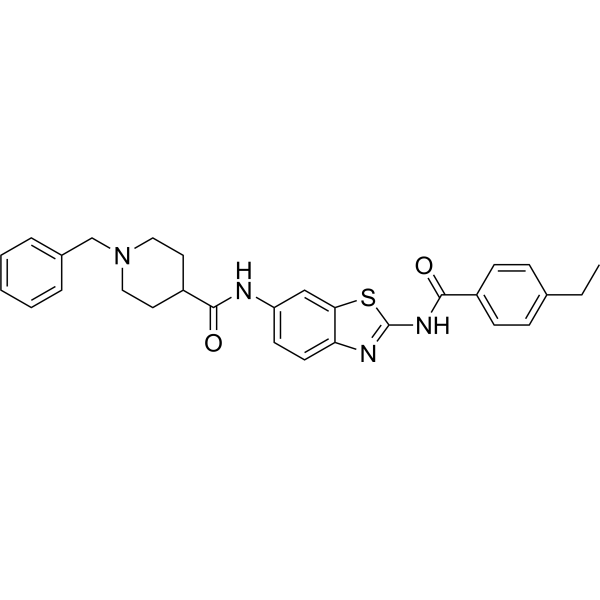
-
- HY-146354
-
|
|
Apoptosis
Reactive Oxygen Species
|
Cancer
|
|
Antiproliferative agent-4 (compound 2y) has excellent anti-proliferative activity against certain cancer cell lines. Antiproliferative agent-4 reduces the mitochondrial membrane potential, and increases the apoptosis rate and the level of ROS on EC109. Antiproliferative agent-4 inhibits tumour growth in nude mice, with low toxicity .
|
-

-
- HY-P4052
-
|
|
ROS Kinase
|
Neurological Disease
|
|
Pinealon is a 3-amino acid peptide and shows neuroprotective properties. Pinealon prevents reactive oxygen species (ROS) accumulation and suppresses the activation of ERK 1/2. Pinealon stimulates the functional activity of the main cellular elements of brain tissue, reduces the level of spontaneous cell death. Pinealon protects the rat offspring from prenatal hyperhomocysteinemia .
|
-

-
- HY-122614
-
S29434
2 Publications Verification
NMDPEF
|
Autophagy
|
Neurological Disease
|
|
S29434 (NMDPEF) is a potent, competitive, selective and cell-permeable inhibitor of quinone reductase 2 (QR2), with IC50s ranging from 5 to 16 nM for human QR2 at different organizational levels, and has good selectivity for QR2 over QR1. S29434 induces autophagy and inhibits QR2-mediated ROS production .
|
-
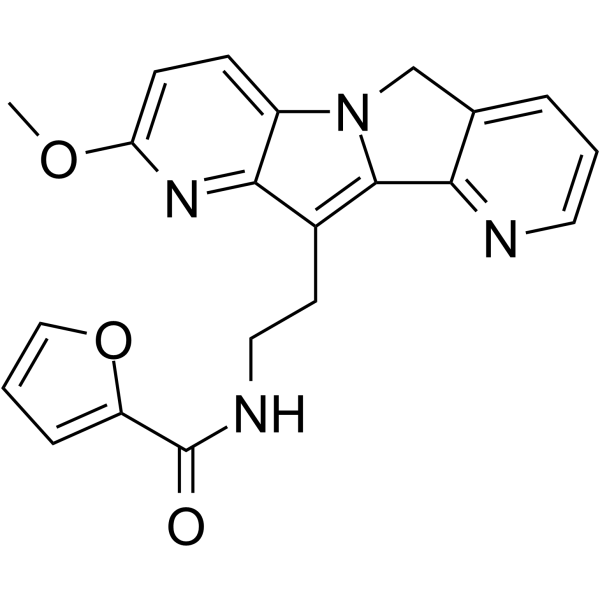
-
- HY-142125
-
|
|
Xanthine Oxidase
Reactive Oxygen Species
Apoptosis
|
Inflammation/Immunology
Cancer
|
|
Broussochalcone A is an antioxidant and an inhibitor of Xanthine Oxidase (IC50=2.21 μM), with free radical scavenging activity. Broussochalcone A inhibits iron-induced lipid peroxidation and nitric oxide synthesis in lipopolysaccharide (LPS) -activated macrophages. Broussochalcone A also induces Apoptosis of human renal carcinoma cells by increasing ROS levels and activating FOXO3 signaling pathways .
|
-
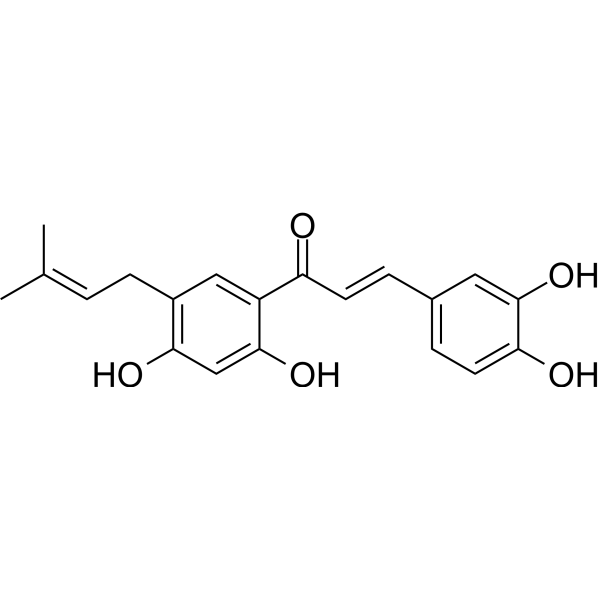
-
- HY-N0155
-
|
|
ROR
Reactive Oxygen Species
Apoptosis
Autophagy
|
Neurological Disease
Inflammation/Immunology
Cancer
|
|
Nobiletin is a poly-methoxylated flavone from the citrus peel that improves memory loss. Nobiletin is a retinoid acid receptor-related orphan receptors (RORs) agonist. Nobiletin can reduce reactive oxygen species (ROS) levels in differentiated C2C12 myotubes and has anti-inflammation and anti-cancer properties, including anti-angiogenesis, anti-proliferation, anti-metastasis and induced apoptosis .
|
-
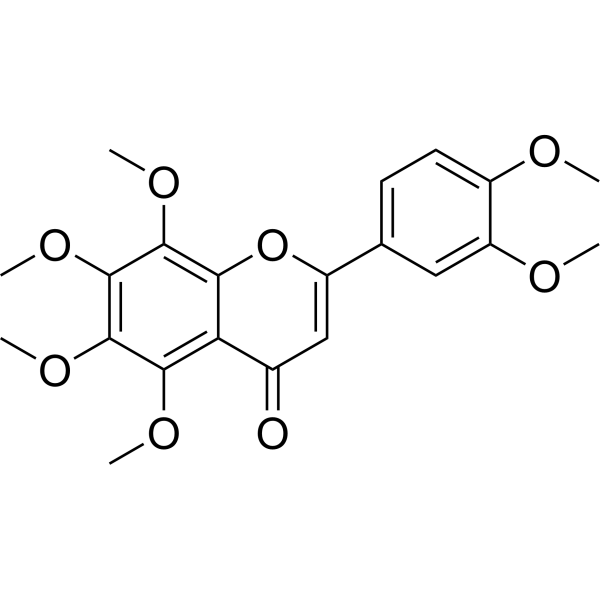
-
- HY-146105
-
|
|
Apoptosis
MDM-2/p53
MMP
Bcl-2 Family
Reactive Oxygen Species
|
Cancer
|
|
Anticancer agent 65 (compound 4c) shows excellent activity in cancer cell lines, especially A549 cells, with an IC50 of 1.07 μM. Anticancer agent 65 induces S-phase arrest in A549 cells and increases the expression level of p53 and p21. Anticancer agent 65 causes apoptosis, ROS generation and collapse of MMP in A549 cells .
|
-

-
- HY-155852
-
|
|
Ferroptosis
|
Others
|
|
Lepadin H is a marine alkaloid and ferroptosis inducer. Lepadin H exhibits significant cytotoxicity, promotes p53 expression, increases ROS production and lipid peroxidation, decreases SLC7A11 and GPX4 levels, and upregulates ACSL4 expression. Lepadin H induces ferroptosis through the p53-SLC7A11-GPX4 pathway .
|
-
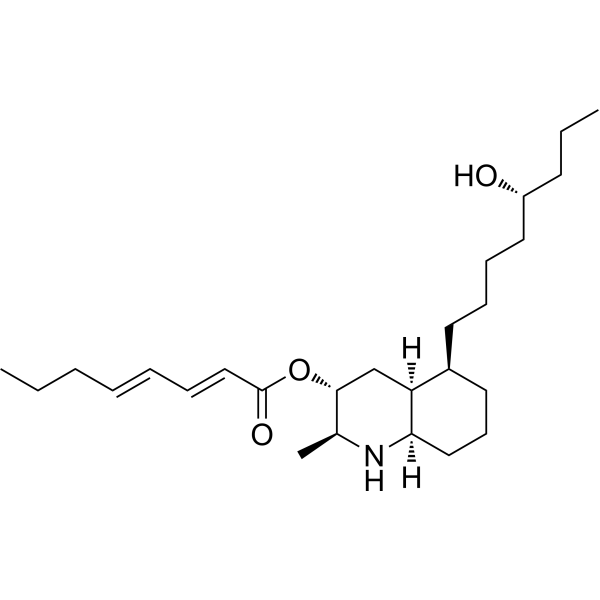
-
- HY-100900
-
|
|
Deubiquitinase
|
Cancer
|
|
ML364 is a selective ubiquitin specific peptidase 2 (USP2) inhibitor (IC50=1.1 μM) with anti-proliferative activity, which direct binds to USP2 (Kd=5.2 μM), induces an increase in cellular cyclin D1 degradation and causes cell cycle arrest. ML364 increases the levels of mitochondrial ROS and decreases in the intracellular content of ATP .
|
-
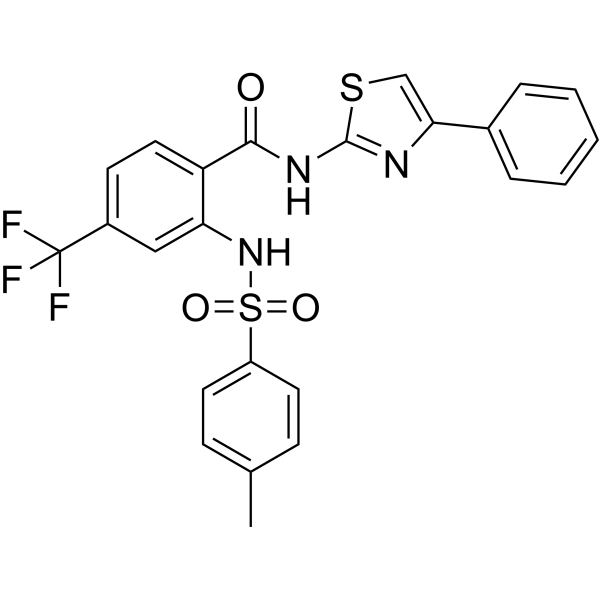
-
- HY-B0150R
-
|
Niacinamide(Standard); Nicotinic acid amide (Standard)
|
Endogenous Metabolite
Sirtuin
|
Cancer
|
|
Nicotinamide (Standard) is the analytical standard of Nicotinamide. This product is intended for research and analytical applications. Nicotinamide is a form of vitamin B3 or niacin. Nicotinamide Hydrochloride inhibits SIRT2 activity (IC50: 2 μM). Nicotinamide also inhibits SIRT1. Nicotinamide increases cellular NAD+, ATP, ROS levels. Nicotinamide inhibits tumor growth and improves survival. Nicotinamide also has anti-HBV activity .
|
-
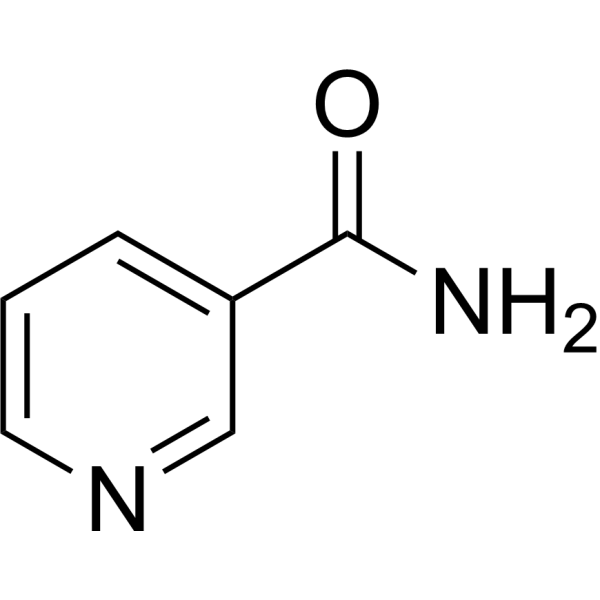
-
- HY-157440
-
|
|
Amyloid-β
Reactive Oxygen Species
Cholinesterase (ChE)
|
Neurological Disease
|
|
AChE/Aβ-IN-3 (compound AM5) is a dual inhibitor of AChE and Amyloid-β aggregation with IC50<.sub> values of 1.29 and 4.93 μM, respectively. AChE/Aβ-IN-3 has antioxidant properties that scavenge ROS and restore their normal levels. AChE/Aβ-IN-3 can be used in the study of neurological diseases, such as Alzheimer's disease .
|
-

-
- HY-147548
-
|
|
Others
|
Others
|
|
Keap1-Nrf2-IN-10 (compound 15) is a potent NQO1 inducer. Keap1-Nrf2-IN-10 inhibits oxidative stress by decreasing the levels of MDA, ROS, NQO1 in the liver for gamma-irradiated mice. Keap1-Nrf2-IN-10 improves the survival of gamma-irradiated mice .
|
-

-
- HY-162084
-
|
|
Autophagy
Apoptosis
|
Cancer
|
|
BKN-1 is a bifunctional ligand that can not only track the formation of mtG4s (G-quadruplexes, four-stranded DNA structures containing Hoogsteen bonds) through far-red emission, but can also induce mitochondrial dysfunction. BKN-1 has anti-tumor activity and may cause mtDNA loss, damage mitochondrial integrity, reduce ATP levels, and trigger ROS imbalance, leading to apoptosis and autophagy .
|
-

-
- HY-B0240
-
Disulfiram
Maximum Cited Publications
47 Publications Verification
Tetraethylthiuram disulfide; TETD
|
Aldehyde Dehydrogenase (ALDH)
Interleukin Related
Pyroptosis
Apoptosis
Cuproptosis
|
Metabolic Disease
Cancer
|
|
Disulfiram (Tetraethylthiuram disulfide) is a specific inhibitor of aldehyde-dehydrogenase (ALDH1), used for the treatment of chronic alcoholism by producing an acute sensitivity to alcohol. Disulfiram inhibits gasdermin D (GSDMD) pore formation in liposomes and inflammasome-mediated pyroptosis and IL-1β secretion in human and mouse cells. Disulfiram, a copper ion carrier, with Cu 2+ increases intracellular ROS levels and induces cuproptosis .
|
-
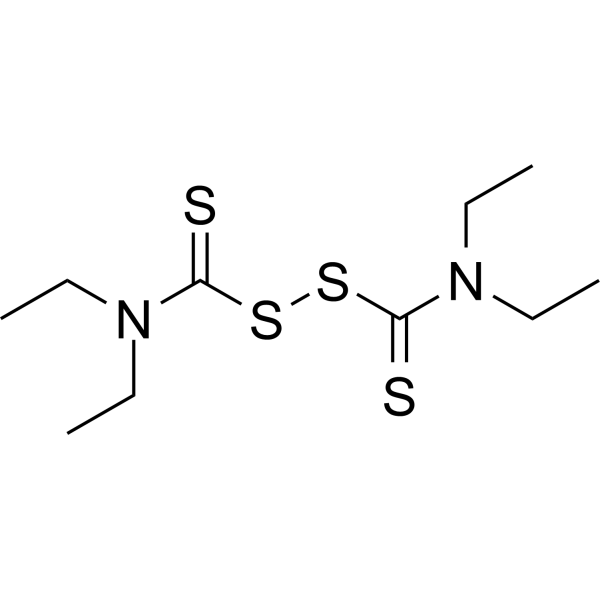
-
- HY-103275
-
|
NSC 680410
|
Bcr-Abl
Apoptosis
|
Cancer
|
|
Adaphostin (NSC 680410), the adamantyl ester of AG957, is a potent p210 bcr/abl inhibitor (IC50=14 μM). Adaphostin induces apoptosis in T-lymphoblastic human leukemia cell lines (IC50 ranging from 17 to 216 nM). Adaphostin has significant and selective activity against chronic and acute myeloid leukemia cells. Adaphostin increased the level of reactive oxygen species (ROS) within CLL B cells .
|
-
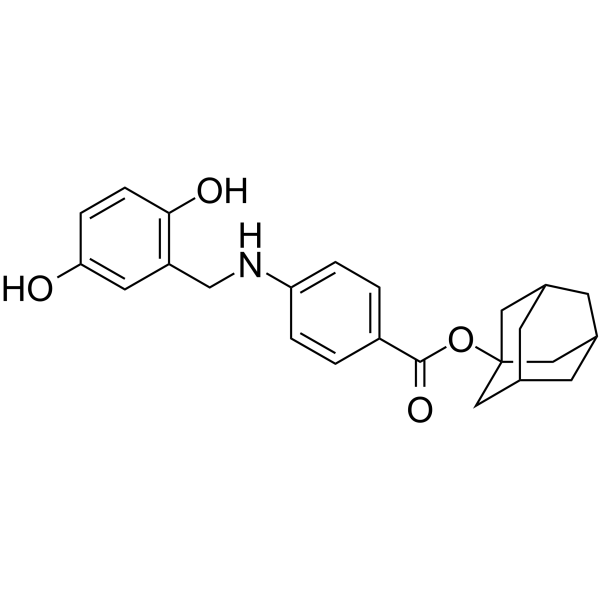
-
- HY-N11439
-
|
|
CDK
Akt
ERK
Apoptosis
Bacterial
|
Infection
Neurological Disease
Cancer
|
|
Albanol B is an arylbenzofuran derivative which can be isolated from mulberries. Albanol B exhibits anti-Alzheimer's disease, anti-bacterial and antioxidant activities. Albanol B inhibits cancer cells proliferation, down-regulates CDK1 expression. Albanol B also induces cell cycle arrest at G2/M and apoptosis. And Albanol B induces mitochondrial ROS production and increases the phosphorylation levels of AKT and ERK1/2 .
|
-

-
- HY-155851
-
|
|
Ferroptosis
MDM-2/p53
Glutathione Peroxidase
|
Cancer
|
|
Lepadin E is a significantly cytotoxic ferroptosis inducer that induces iron death through the classical p53-SLC7A11-GPX4 pathway. Lepadin E promoted p53 expression, decreases SLC7A11 and GPX4 levels, and leads to increased ROS and lipid peroxide production, and upregulated ACSL4 expression, thus causes cell death. Lepadin E has significant antitumor effect .
|
-
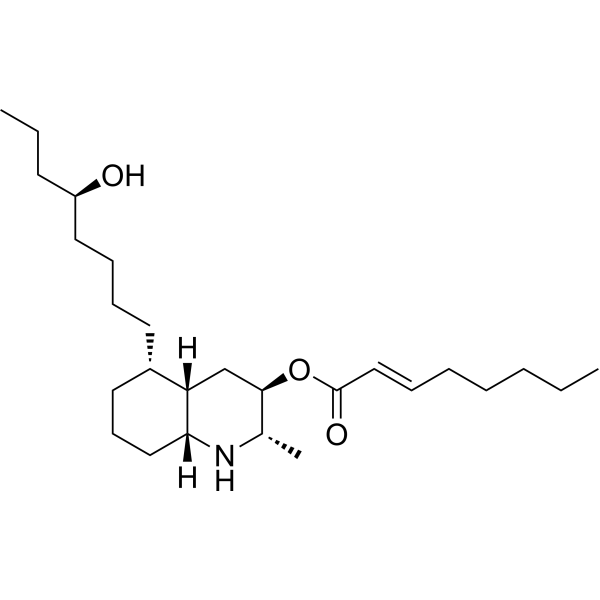
-
- HY-145290
-
|
|
Topoisomerase
Apoptosis
|
Cancer
|
|
CPT-Se3, a selenoproagent of Camptothecin (CPT), shows improved potency in killing cancer cells and inhibiting tumor growth. CPT–Se3 decreases the GSH/GSSG ratio and total thiols, elevates the ROS level in Hep G2 cells, and eventually induces apoptosis of cancer cells. CPT-Se3 shows cytotoxicity against HeLa, Hep G2, A549, and SMMC-7721 cells (IC50= 2.19-4.7 μM) .
|
-
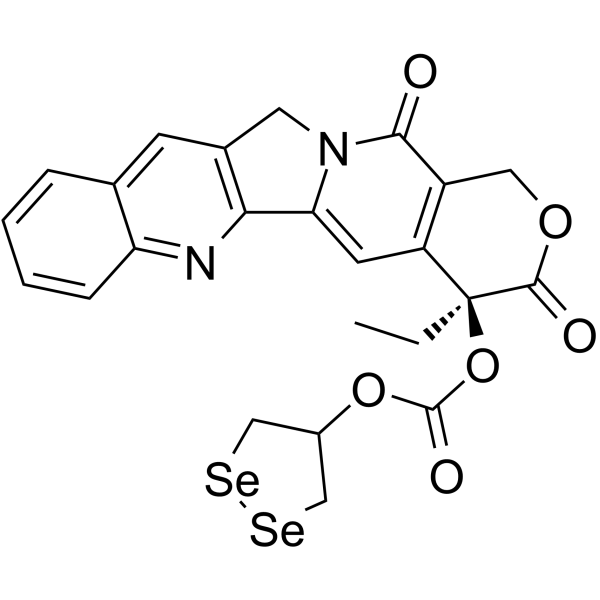
-
- HY-145291
-
|
|
Topoisomerase
Apoptosis
|
Cancer
|
|
CPT-Se4, a selenoproagent of Camptothecin (CPT), shows improved potency in killing cancer cells and inhibiting tumor growth. CPT-Se4 decreases the GSH/GSSG ratio and total thiols, elevates the ROS level in Hep G2 cells, and eventually induces apoptosis of cancer cells. CPT-Se4 shows cytotoxicity against HeLa, Hep G2, A549, and SMMC-7721 cells (IC50= 2.54-6.4 μM) .
|
-
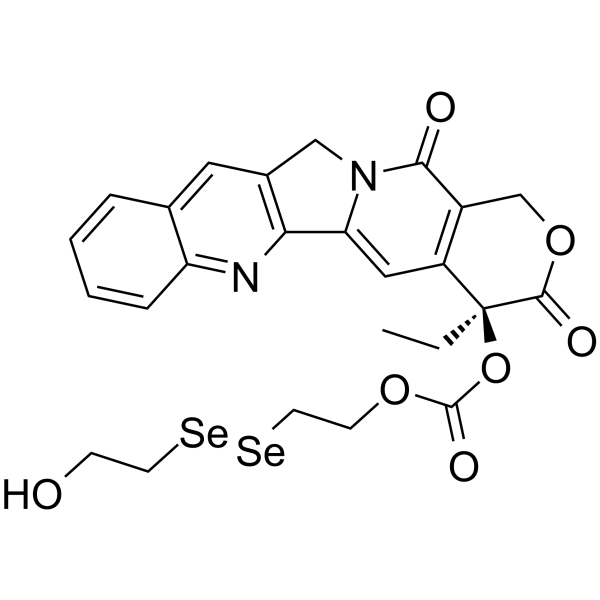
-
- HY-157992
-
-
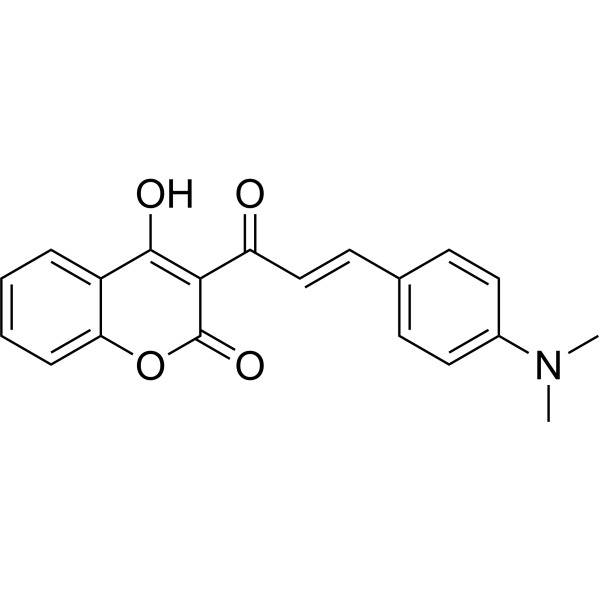
-
- HY-151555
-
|
|
Fungal
|
Infection
|
|
Antifungal agent 44 (compound 2A-5) is an antifungal agent, and shows excellent fungicidal activity superior to Kresoxim-methyl (HY-125776). Antifungal agent 44 shows fungicidal activity against Phytophthora capsici most remarkably, with an EC50 value of about 5 μM .
|
-

- HY-N3248
-
|
Momordicacoside G
|
Endogenous Metabolite
Reactive Oxygen Species
Apoptosis
|
Inflammation/Immunology
Cancer
|
|
Momordicoside G (Momordicacoside G) is an orally active cucurbitane-type triterpene glycoside. Momordicoside G selectively induces apoptosis of M1-like macrophages, without affecting M2-like macrophages. Momordicoside G reduces intracellular ROS levels and promotes autophagy. Momordicoside G also has anticancer activity, inhibiting the growth of cancer cell lines. Momordicoside G stimulates M2-associated lung injury repair and prevents inflammatory lung cancer injury .
|
-
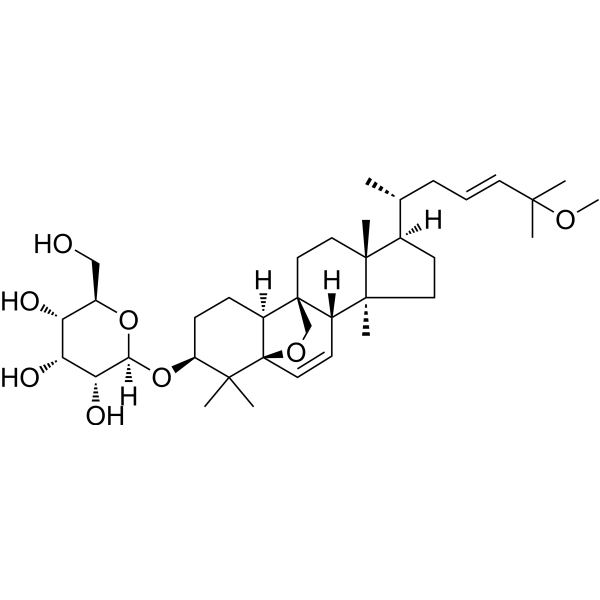
- HY-146432
-
|
|
Apoptosis
Raf
Ras
ROS Kinase
MDM-2/p53
|
|
|
Antitumor agent-60 (compound 20) is a potent antitumor agent, targeting RAS-RAF signaling pathway and binding to CRAF with a Kd value of 3.93 μM. Antitumor agent-60 induces apoptosis by blocking cell cycle at G2/M phase. Antitumor agent-60 enhances the level of p53 and ROS. Antitumor agent-60 causes oval and irregular nucleus in cancer cells. Antitumor agent-60 can suppress the growth of tumor to some extent in A549 xenograft model .
|
-

- HY-143243
-
|
|
Apoptosis
NF-κB
Keap1-Nrf2
Reactive Oxygen Species
|
Cardiovascular Disease
|
|
Antioxidant agent-5 (compound D-6) is a potent antioxidant agent. Antioxidant agent-5 can inhibit oxLDL (oxidized low-density lipoprotein)-induced apoptosis and the expression of ICAM-1 and VCAM-1 in VECs. Antioxidant agent-5 suppresses oxLDL-induced increase of ROS level and nuclear translocation of NF-κB. Antioxidant agent-5 protects against oxLDL-induced endothelial injury by activating Nrf2/HO-1 anti-oxidation pathway .
|
-
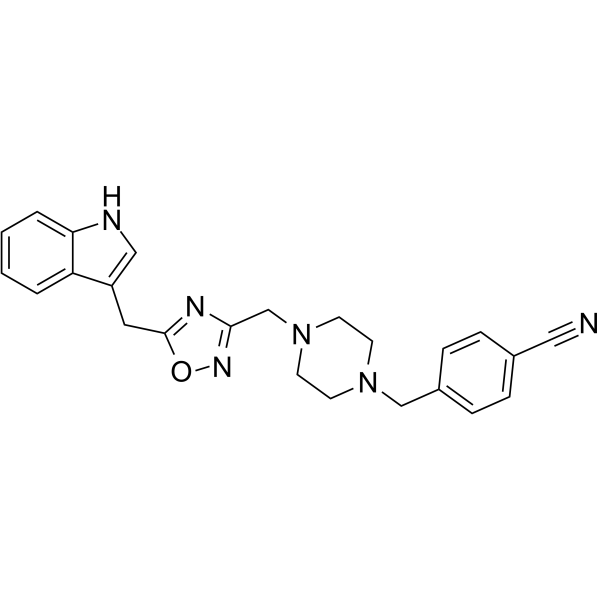
- HY-F0003
-
|
|
Ferroptosis
Endogenous Metabolite
|
Cancer
|
|
NADPH tetrasodium salt functions as an important cofactor in a variety of metabolic and biosynthetic pathways. NADPH tetrasodium salt plays a vital role in the biosynthesis of agents, chiral alcohols, fatty acids and biopolymers, while also being required for lipid biosynthesis, biomass formation, and cell replication. The demand for NADPH tetrasodium salt is particularly high in proliferating cancer cells, where it acts as a cofactor for the synthesis of nucleotides, proteins, and fatty acids. NADPH tetrasodium salt is also essential for the neutralization of the dangerously high levels of reactive oxygen species (ROS) generated by increased metabolic activity. NADPH tetrasodium salt is an endogenous inhibitor of ferroptosis .
|
-

- HY-N0316
-
|
|
NF-κB
Reactive Oxygen Species
Apoptosis
VEGFR
c-Myc
|
Cancer
|
|
Mollugin is an orally active and potent NF-κB inhibitor. Mollugin induces S-phase arrest of HepG2 cells, and increased intracellular reactive oxygen species (ROS) levels. Mollugin induces DNA damage in HepG2 cells, as well as an increase in the expression of p-H2AX. Mollugin shows anti-cancer effect by inhibiting TNF-α-induced NF-κB activation. Mollugin enhances the osteogenic action of BMP-2 (bone morphogenetic protein 2) via the p38-Smad signaling pathway .
|
-

- HY-146307
-
|
|
TrxR
|
Cancer
|
|
TrxR-IN-3 (Compound 2c) is a potent inhibitor of TrxR. TrxR-IN-3 exhibits potent antiproliferative activities against five human cancer cell lines, especially against breast tumor cells. TrxR-IN-3 increases ROS levels and resulted in marked apoptosis by regulating apoptosis-related proteins expressed in the breast cancer cells. TrxR-IN-3 also triggers the formation of autophagosomes and autolysosomes by promoting the expression of LC3-II and Beclin-1 and diminishing the expression of LC3-I and p62 proteins .
|
-

- HY-156150
-
|
|
Fungal
Cytochrome P450
PD-1/PD-L1
|
Infection
|
|
CYP51/PD-L1-IN-2 (compound L20) is a quinazoline compound with antifungal activity. CYP51/PD-L1-IN-2 is a dual inhibitor of CYP51 (IC50: 0.263 μM) and PD-L1 (IC50: 0.017 μM), which can induce early apoptosis of fungal cells in the cell cycle. CYP51/PD-L1-IN-2 also significantly reduced intracellular IL-2, NLRP3, and NF-κBp65 protein levels, induced mitochondrial damage and ROS accumulation, and ultimately led to fungal lysis and death .
|
-
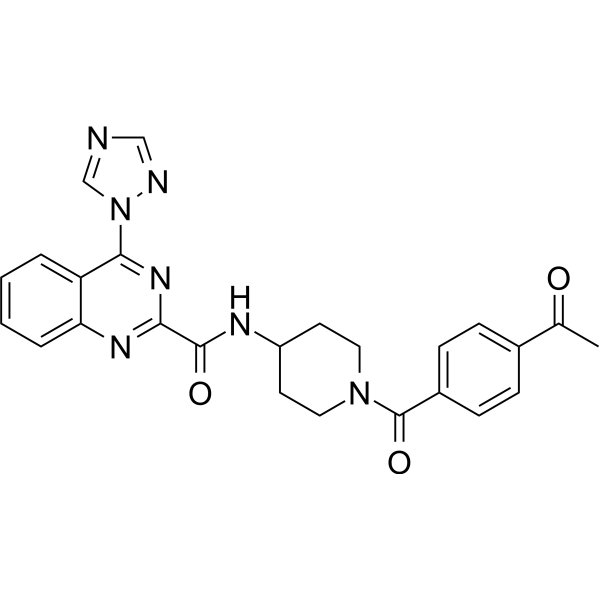
- HY-156151
-
|
|
Fungal
Cytochrome P450
PD-1/PD-L1
|
Infection
|
|
CYP51/PD-L1-IN-3 (compound L21) is a quinazoline compound with antifungal activity. CYP51/PD-L1-IN-3 is a dual inhibitor of CYP51 (IC50: 0.205 μM) and PD-L1 (IC50: 0.039 μM), which can induce early apoptosis of fungal cells in the cell cycle. CYP51/PD-L1-IN-3 also significantly reduced intracellular IL-2, NLRP3, and NF-κBp65 protein levels, induced mitochondrial damage and ROS accumulation, and ultimately led to fungal lysis and death .
|
-

- HY-156149
-
|
|
Fungal
Cytochrome P450
PD-1/PD-L1
|
Infection
|
|
CYP51/PD-L1-IN-1 (compound L11) is a quinazoline compound with antifungal activity. CYP51/PD-L1-IN-1 is a dual inhibitor of CYP51 (IC50: 0.884 μM) and PD-L1 (IC50: 0.083 μM), which can induce early apoptosis of fungal cells in the cell cycle. CYP51/PD-L1-IN-1 also significantly reduced intracellular IL-2, NLRP3, and NF-κBp65 protein levels, induced mitochondrial damage and ROS accumulation, and ultimately led to fungal lysis and death .
|
-
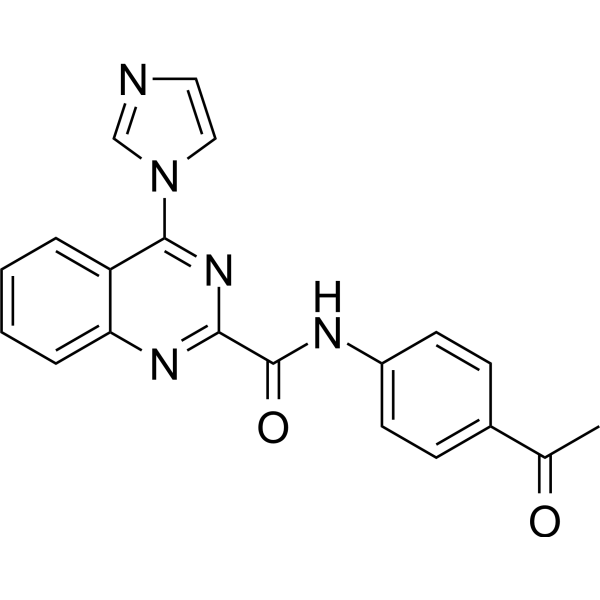
| Cat. No. |
Product Name |
Type |
-
- HY-D1713
-
|
|
Fluorescent Dyes/Probes
|
|
CM-H2DCFDA is a derivative of H2DCFDA (HY-D0940). CM-H2DCFDA can be used to determine cellular oxidant levels (Ex/Em: 495/530 nm). CM-H2DCFDA is light-sensitive .
|
| Cat. No. |
Product Name |
Target |
Research Area |
-
- HY-P5553
-
|
|
Bacterial
|
Infection
|
|
cPcAMP1/26 is an antimicrobial peptide. cPcAMP1/26 effectively kills A.hydrophila and S. aureus. cPcAMP1/26 induces depolarization of the bacterial plasma membrane, and increases intracellular ROS levels .
|
-
- HY-P2005
-
|
|
Peptides
|
Others
|
|
Malformin C is an algicidal peptide can be isolated from Aspergillus and exhibits dose-dependent algicidal activity. Malformin C induces a significant increase in ROS levels in algal cells, resulting in impaired SOD activity and high production of MDA content .
|
-
- HY-P4052
-
|
|
ROS Kinase
|
Neurological Disease
|
|
Pinealon is a 3-amino acid peptide and shows neuroprotective properties. Pinealon prevents reactive oxygen species (ROS) accumulation and suppresses the activation of ERK 1/2. Pinealon stimulates the functional activity of the main cellular elements of brain tissue, reduces the level of spontaneous cell death. Pinealon protects the rat offspring from prenatal hyperhomocysteinemia .
|
| Cat. No. |
Product Name |
Category |
Target |
Chemical Structure |
| Cat. No. |
Product Name |
Chemical Structure |
-
- HY-W654078
-
|
|
|
Bisphenol AF- 13C12 is an isotopic label of Bisphenol AF. Bisphenol AF is used in polycarbonate plastic and epoxy resin manufacturing. Bisphenol AF can significantly increase intracellular ROS levels .
|
-

Your information is safe with us. * Required Fields.
Inquiry Information
- Product Name:
- Cat. No.:
- Quantity:
- MCE Japan Authorized Agent:




































































